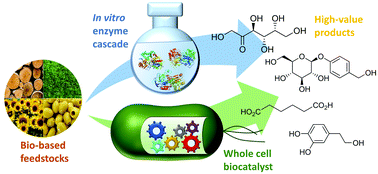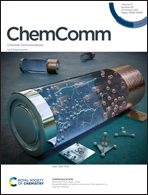Recent advances in (chemo)enzymatic cascades for upgrading bio-based resources
Abstract
Developing (chemo)enzymatic cascades is very attractive for green synthesis, because they streamline multistep synthetic processes. In this Feature Article, we have summarized the recent advances in in vitro or whole-cell cascade reactions with a focus on the use of renewable bio-based resources as starting materials. This includes the synthesis of rare sugars (such as ketoses, L-ribulose, D-tagatose, myo-inositol or aminosugars) from readily available carbohydrate sources (cellulose, hemi-cellulose, starch), in vitro enzyme pathways to convert glucose to various biochemicals, cascades to convert 5-hydroxymethylfurfural and furfural obtained from lignin or xylose into novel precursors for polymer synthesis, the syntheses of phenolic compounds, cascade syntheses of aliphatic and highly reduced chemicals from plant oils and fatty acids, upgrading of glycerol or ethanol as well as cascades to transform natural L-amino acids into high-value (chiral) compounds. In several examples these processes have demonstrated their efficiency with respect to high space-time yields and low E-factors enabling mature green chemistry processes. Also, the strengths and limitations are discussed and an outlook is provided for improving the existing and developing new cascades.

- This article is part of the themed collections: Green Synthesis and Chemical Communications HOT articles


 Please wait while we load your content...
Please wait while we load your content...